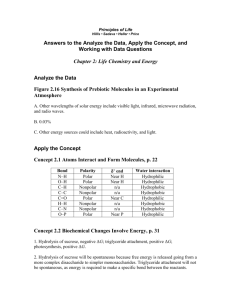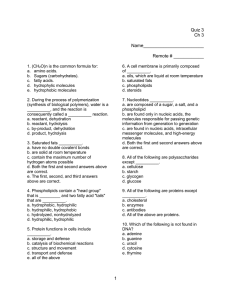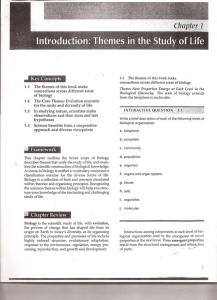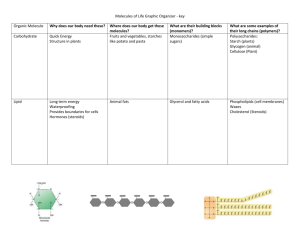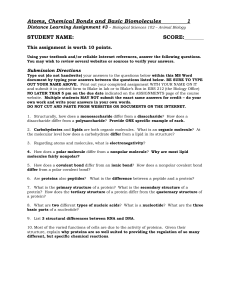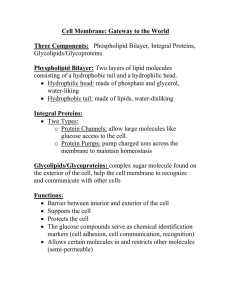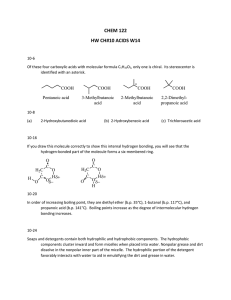AP Biology Chapter 4 – Carbon Chemistry Name ______________________________
advertisement
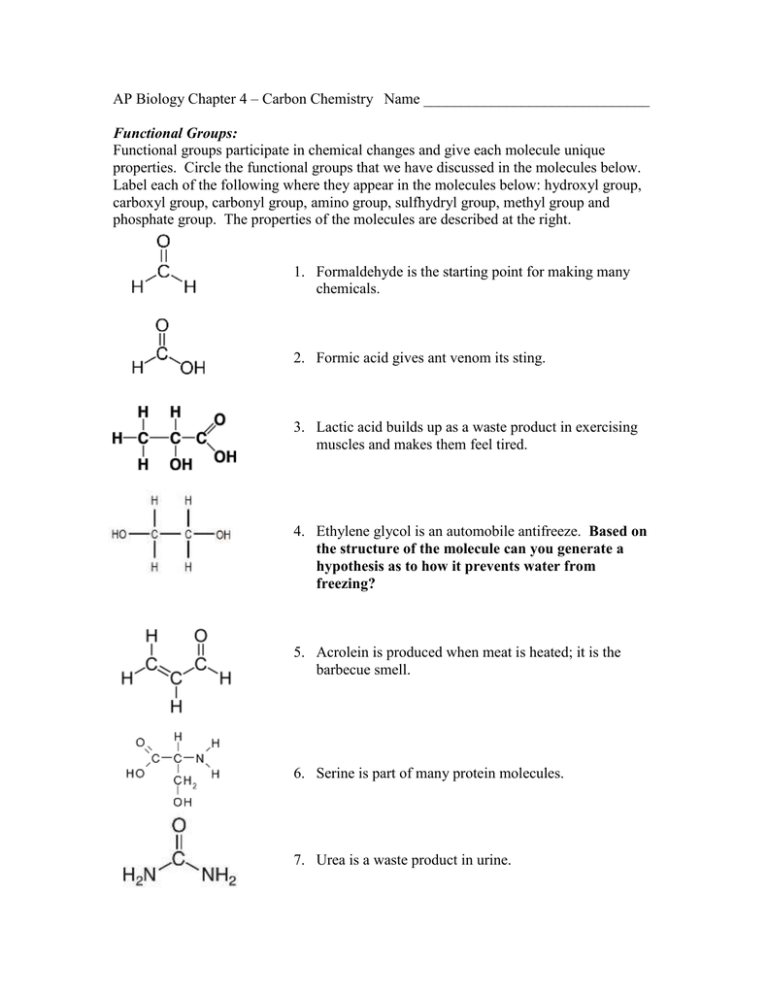
AP Biology Chapter 4 – Carbon Chemistry Name ______________________________ Functional Groups: Functional groups participate in chemical changes and give each molecule unique properties. Circle the functional groups that we have discussed in the molecules below. Label each of the following where they appear in the molecules below: hydroxyl group, carboxyl group, carbonyl group, amino group, sulfhydryl group, methyl group and phosphate group. The properties of the molecules are described at the right. 1. Formaldehyde is the starting point for making many chemicals. 2. Formic acid gives ant venom its sting. 3. Lactic acid builds up as a waste product in exercising muscles and makes them feel tired. 4. Ethylene glycol is an automobile antifreeze. Based on the structure of the molecule can you generate a hypothesis as to how it prevents water from freezing? 5. Acrolein is produced when meat is heated; it is the barbecue smell. 6. Serine is part of many protein molecules. 7. Urea is a waste product in urine. 8. Putrescene’s name is descriptive; it is produced in rotting flesh. 9. Methanethiol is a colorless gas that has a putrid odor found in the blood and brain of humans. A main component of “bad breath”. 10. Adenosine triphosphate is used as the energy currency molecule of the cell. Why is ATP so likely to react with water? 11. Functional groups can modify the properties of organic molecules. In the following table, indicate whether each functional group is polar or nonpolar and hydrophobic or hydrophilic. Which of these functional groups are found in proteins and lipids? Functional group -OH -CO2H -NH2 -SH -PO4 Polar or Nonpolar Hydrophobic or Hydrophilic Found in… All Many proteins proteins Many lipids Matching: Match the formulas (a-f) to the terms at the right. Choices may be used more than once; more than one right choice may be available. b. c. a. f. e. d. _________________ 12. structural isomers _________________ 13. geometric isomers _________________ 14. can have enantiomers _________________ 15. can make cross link in protein _________________ 16. carboxylic acid _________________ 17. hydrophilic _________________ 18. hydrocarbon _________________ 19. amino acid _________________ 20. organic phosphate _________________ 21. aldehyde _________________ 22. amine _________________ 23. ketone

